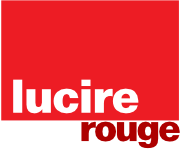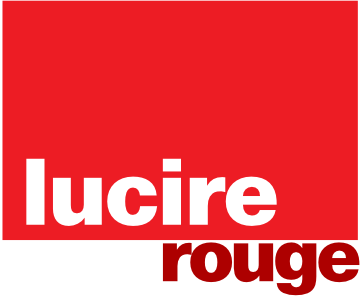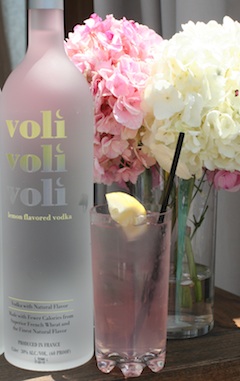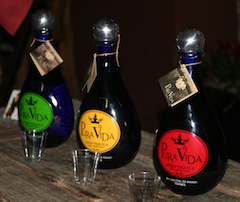Paris by the numbers
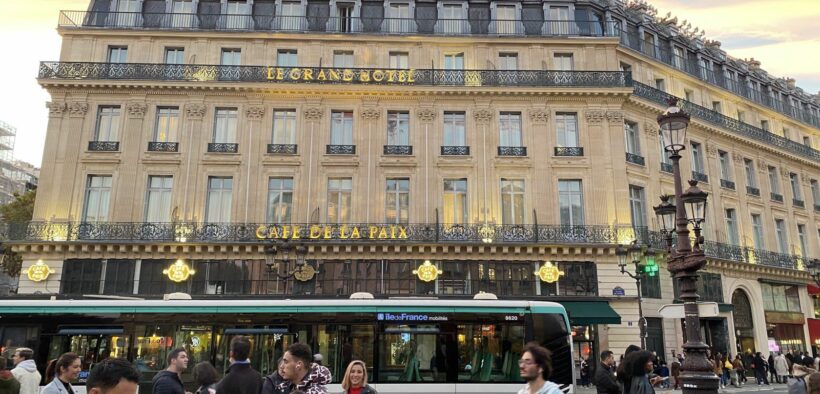
It was so apt that a new version of Mrs Harris Goes to Paris was playing aboard Air France on the LA-to-Paris route, even though it recently hit theatres. Who wouldn’t want to experience a personal transformation in Paris? Its top billing on the flight’s entertainment system practically announced, ‘Vacation goals!’ In this incarnation, a humble but optimistic cleaning lady (Lesley Manville) is on a mission to visit Christian Dior’s atelier in 1957 and purchase one of his bespoke creations: a tangible piece of joie de vivre she can theoretically own forever. For the queenly sum of ‘5,000 quid’ and the opportunity to be fitted for her dream, she hopes to emerge a more actualized version of herself.
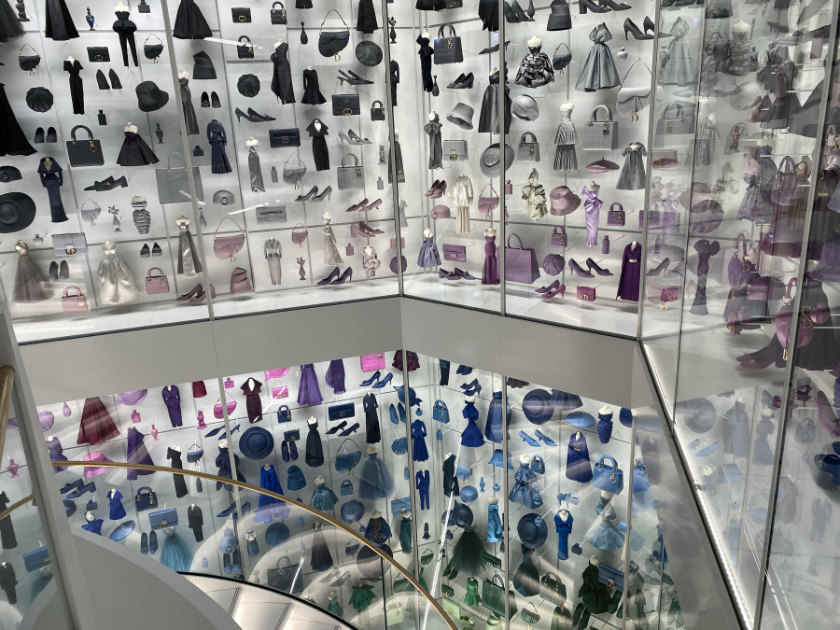
The grand staircase of the Archives Dior, the most fashionable museum ticket in Paris.
A takeaway from the film is that an ideal way to make Paris your own is to allow your personal passions inform your itinerary. As I planned this short trip, however, I noticed that arrondissements can also be helpful. The 9th arrondissement would be the perfect base camp, with its Métro station—Place de l’Opéra—serving as a gateway to the Marais District (skirting the 3rd and 4th), St Germain de Près (6th), the 1st and 7th (with access to the Louvre, L’Orangerie, Jardin des Tuileries, and Musée d’Orsay), and the 8th, which blends the ultra-posh, history, and touristy fun.
Dressed to the 9th
When a hotel is a microcosm of the city where it sits, it can transform each day in town into a fully immersive experience. The 458-room Inter-continental Le Grand Hotel & Spa is that kind of hotel, and continues to be after 120 years. My travel companion, Derek Poirier, and I found out there was something undeniably magical about starting a long Paris weekend with an indulgent lunch at Café de la Paix just after checking in, and walking out onto the terrace of a first-floor suite at dawn on the second day to see morning sunlight bounce off the Opéra Garnier’s gilded neoclassical structure.
The Grand Hôtel, opened May 5, 1862 during Napoleon III’s reign and France’s Second Empire, ushered in a new golden age for Paris after decades of political and economic turmoil. While architect Charles Garnier designed the hotel (as well as the opera house cross the street bearing his name), other top artists, sculptors, and furniture designers of the day were invited to leave their mark throughout the interior. In anticipation of the 1867 Paris Exposition Universelle, it introduced game-changing features such as elevators, a grand reception area, and exclusive and personalized guest services.
Interior designer Pierre-Yves Rochon, who has been rising to the occasion to keep things up-to-date with public and private spaces since 1985, is lauded for overseeing the 2014 restoration of the Opéra Ballroom and removing a false ceiling to open up the glass roof covering the lobby to reveal intricate architectural detail and natural light. More recently, he collaborated with art consultancy La Photofactory (operated by mother–daughter team Nathalie and Lisa Féra) to carry public areas visually into the 21st century. His most ambitious challenge of late was transforming five of the hotel’s top suites into lush residential-style Signature Parisian apartments between 2003 and 2021. Each one has its own distinctive colour palette and contemporary décor that can compete with the offerings of the many petite five-star boutique properties across town. He has also made rooms at other prices (like the one we stayed in on the first floor) more modern while keeping their historic integrity intact.
The prolific breakfast buffet for guests at Café de la Paix brims with everything one would want to eat above and beyond croissants. However, to get the full experience of the historic restaurant, book lunch or dinner. Its preparations of plump and garlicky escargot, onion soup, sole meunière, and ‘Norwegian Omelet’ (a luxe baked Alaska with torched meringue, rum raisin ice cream, and a sponge cake base) are some of the best in the city. Executive chef Laurent André also adds in distinctive original dishes based on whatever is in season as well as lovely pastas and seafood dishes.
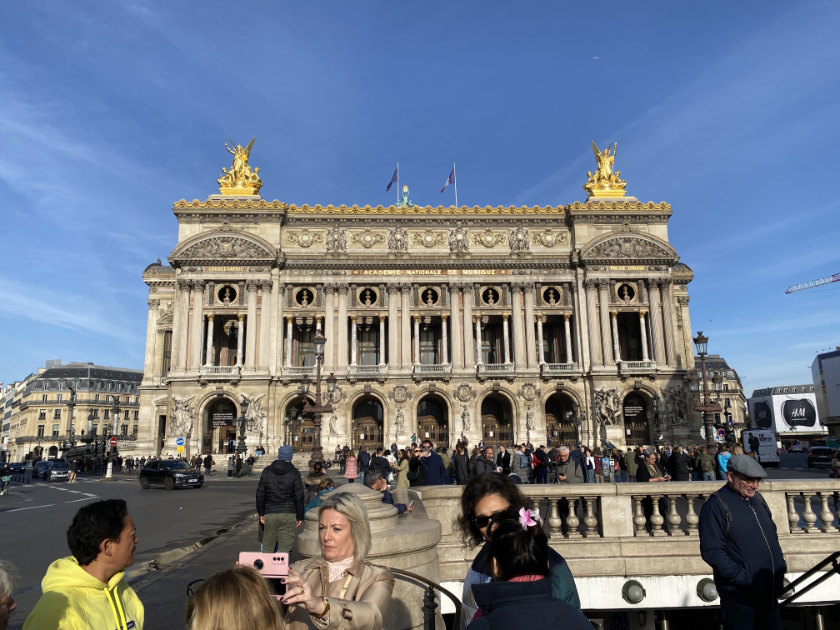
The Opera Garnier Metro Station, just outside the Hotel Le Grand’s front door.
One side of the triangular building faces out toward Galeries Lafayette Haussmann, which occupies three buildings on facing corners-—a food emporium, a separate men’s store, and the original store with its jewel-toned ceiling. In addition to traditional departments, the main building houses Le (Re)Store Galeries Lafayette, a 500 m² third-floor space with bright interiors, eclectic displays, and an intentional lack of fussiness. In its first year, it drew in long-time vintage shop enthusiasts and new converts for the way it encapsulates the current Zeitgeist of sustainable fashion and enduring popularity of “thrifting”, and features extras such as collection areas for recyclable clothing and personal shopper services.
If I had more than four days on the schedule (or, if Derek had found more Christian Louboutin shoes and statement pieces to reflect upon in the men’s store), I could have spent an afternoon treasure hunting, with so many specialized boutiques (Monogram, Personal Seller, Crushon, Relique, Culture Vintage, Salut Beauté, La Droguerie du Good, and Patine) and eye-catching pieces. I walked out with a pyjama-inspired blouse from Les Recuperables, creator of upcycled garments made from vintage linens and dormant stocks from French textile manufacturers. Better still, it was packaged in Paris’s latest “it” bag: the recycled paper (Re)Store shopping tote. I did not make it into the food emporium, however. À la prochaine fois.
Good things come in 3s
The historic Jewish quarter’s eternally bohemian cool seems to flow out from the front yards of the Centre Pompidou and Paris City Hall, populated by street musicians, peaceful political and social demonstrations, picnicking families, artists, and university students. Like the great museums along the Seine, the Pompidou boasts a destination restaurant (Georges) and boutiques with art books, clever gift items, toys, and gadgets. We also found some of the city’s most scenic rooftop views, hangout areas with night clubby pillows and deck chairs, and an eye-popping assemblage of modern and postmodern art. Side streets flowing out from rue des Francs-Bourgeois and the rue Vieille du Temple abound with businesses that are “alternative” in the best sense of the word.
Anybody wanting a break from white tablecloth dining will not be disappointed, as the colourful Marais streets are a hodgepodge of small artisan bakeries, vegetarian and vegan eateries, global fast casual restaurants, and specialty supermarkets. I recalled a particularly delicious falafel sandwich at the Lenny Kravitz-endorsed l’As du Falafel on my first visit in 2000, and would cheerfully go back as the place is still going strong. Based on current buzz, however, we headed to Homer and Janet by Homer. Homer, opened in 2018, is inspired by founder Moïse Sfez’s passion for New England’s most famous comfort food and fuelled by his win at the Lobster Roll World Championship (the only European to accomplish this feat). New England native Derek was eager to see if this take on his childhood favourite matched the hype. It did, but it was Sfez’s tuna melt that rocketed him to a blissful food coma. There are several equally decadent lobster roll variations (I loved the special: lobster piled into a buttered roll topped with house-blended Old Bay spices, a touch of mayo, chives, and other extras), as well as almost-overstuffed crayfish, crab, and shrimp rolls and a small but crazy-rich “caviar” (salmon roe) slider with cream cheese.
I was excited about Janet by Homer, a reimagining of New York City delis, as pastrami was my childhood favourite and Sfez’s version of it had as much of a buzz in 2022 as his lobster roll did in 2018. Everything is made with top-grade kosher meats and can be accompanied by house-made pickles and potato chips. According to Noam Balensi, Sfez’s business partner, both quickly emerged as local go-tos because of his commitment to finding the right purveyors and spending up to two years perfecting the recipes for everything from the brioche to the corned beef, pastrami, and the beef that makes up his halal version of “pulled pork”. The former is what I would order when (not if) I return. Each restaurant has a beer tailored for its respective specialties, along with condiments (including a truffle-infused hot sauce and mustard) packaged and gifting ready.
There is something quite democratic about taking charge of one’s look and outlook this way, and Mrs Harris (as she emerges later in the film) would agree. On this particular Saturday after the city’s Veteran’s Day observances, Tilt Vintage, Kilo Shop Kawaii, and BIS Boutique Solidaire were at full capacity. Ambitious souls were sifting through garments, which run the gamut from relatively new department store and high-end chain pieces, vintage rarities from old-school designers like Cacharel and Rodier, an occasional couture piece, and countless pairs of jeans.
Picks of the 6th
Consignment shops in fashionable residential areas like the 7th and 14th arrondissements (i.e. Boutique Atomes, Mademoiselle Joséphine, l’Ibis Rouge, and Dressing Factory) take more effort to locate, but gained word-of-mouth for their ultra-selective owners, hand-picked stock, and painstaking organization by size and colour. With a need to keep my eye on the clock for a planned food tour of Saint-Germain-des-Prés, those would need to be reserved for a future trip. I barely had enough time to pop into Chercheminippes, tucked into a residential area of the 6th, to score a Paul & Joe sweater, and steal a few minutes to scan the APC Surplus Jacob (www.apc.fr) to check out the Geneva and Demi Lune bags and Marcelle boots. En route to meet the group, I glimpsed plenty of eye candy in the windows of L’Atelier 55, Manuel Canovas, Simrane, and La Maison Ivre.
The guided food tour (planned by Viking Cruises) had a dessert focus. The district’s main streets are packed with coffee houses and casual cafés, such as Les Insouciants (which wrapped the tour), serving quick salads, sandwiches, and cheese plates with an added splash of people-watching. En route to the smaller streets, we caught a glimpse of Les Deux Magots (another fabled 19th-century celebrity hangout still thriving) as well as cocktail bars Prescription Cocktail Club and Tiger. More things to add to the à la prochaine fois list.
Although chain bakery Paul is a global juggernaut, this location is worth a look for interior–theatre set designer Emilie Bonaventure’s transformation of the space into a movie-set cute milieu where one can enjoy its sweet baked goods and a steaming chocolat chaud as we did. The standout of the tour was the family-owned Richart, which lives up to its reputation as the creators of the best macarons in the city along with exquisite chocolate squares, both offered in both traditional and exotic flavour combinations. Maison Bremond 1830, with delightfully arrayed sweet and savoury condiments, teas, and household trinkets from Provence, was a close second. And I knew its pistachio butter would travel back to LA better than the Richart’s delicate-yet-bold macarons.
Crazy 8th
Although Avenue des Champs-Élysées is tourist central (it reminded me of Beverly Hills’ Rodeo Drive meeting New York City’s Times Square and the Las Vegas Strip), it’s always worth a visit after peak business hours to see Arc de Triomphe lit up, illuminated designer emporiums without the lines, and even a spotless McDonald’s offering baguette sandwiches, croissants, macarons, and canelés d’Aquitaine alongside the regular staples, interesting vegetarian sandwich options, and according to Derek, an exceptional truffled dipping sauce for frites.
Restaurant Le Drugstore, at the foot of the Arc de Triomphe, has been around since 1958, but resonates in its current iteration with locals and travellers. After the manager sat me and Derek, he relayed the restaurant’s interesting back story: Publicis advertising agency founder Marcel Bleustein-Blanchet (a.k.a. the Don Draper of France) was inspired to create an ahead-of-its-time concept after spending a significant period of time in New York City during its heyday as America’s advertising capital. Its original design (by architect Pierre Dufau) reflected post-World War II optimism while the menu mingled American and French sensibilities in the kitchen.
UK designer Tom Dixon’s jewel-toned mid-century modern décor for the current iteration (created in 2017) offsets Guide Michelin three-star chef Eric Frechon’s quirky-yet-elegant menu of pan-Asian–French appetizers and American steakhouse-inspired mains. His ambitious best sellers do not disappoint, with each standing as an excellent foil for bartender Nicholas Usselmann’s delightful, glamorous cocktails. Puff corn with tandoori salt—a zesty fusion of Mexican elote enlivened with Indian seasoning and Japanese tempura texture—was addictive, as was crispy broccoli and curry butter sauce that seemed innocent on the menu but wowed with unexpected bold flavour and texture. Raw fish items (salmon tartare with yuzu and yellow chili; carpaccio of marinated sea bass, vanilla, chili and grilled avocado) are alive with seasonings and preparations that should not work together but do.
We were amazed that chef’s team even found a way to make the familiar rock shrimp tempura and dim sum (often our stand-by snacks in LA) distinctive. Main course dinner offerings, such as a Louisiana fried chicken breast (with peanuts, corn flakes, Louisiana hot sauce), barbecued ribs with grilled corn, and a classic cheeseburger, are a nod to Bleustein-Blanchet’s original food vision. While one can still order a top-shelf martini or Manhattan as customers did in 1958, Usselmann’s originals (Le Sprummer, with French-distilled Gin Anaë, house-made verbena syrup, lemon juice, and champagne; L’Été Indien, with rosé champagne, Chambord, Pimm’s No. 1, and strawberry juice; and his maple julep) capture the fizzy Parisian cocktail culture of the 1950s while adding international twists in keeping with the ambiance and appetizer menu.
La Galerie Dior, the newest museum drawing long lines and requiring reservations, is currently the shining star of the 8th. Beyond being a great starting-point for a fashion-focused Paris visit, all of its elements add up to a fashion connoisseur’s paradise, from the sweeping stairway with a three-storey installation of small-scale dresses, bags, and shoes, to a re-creation of his office (which plays a supporting role in Mrs Harris Goes to Paris) to a variety of evocative displays, and arrangement of Christian Dior’s original creations as well as those from present-day designers he influenced. However, the story of his life and career begins on the top floor, with poignant displays recounting his mother’s influences and his early years as a gallery owner and a theatre costume designer. The Room of Wonders is the most magical of the spaces, wowing the senses while tracing the evolution of the Christian Dior brand beyond the dresses and silhouettes that made him world-famous.
The multi-floor flagship Dior boutique adjoining La Galerie Dior feels like a continuation of the museum, displaying a mix of timeless glamour and cutting-edge statement pieces, accessories, handbags (including those ubiquitous shopping bag-style totes), menswear, a sparkling café (the museum has its own dessert and coffee bar), and (to Derek’s delight) an extensive fragrance department offering the full portfolio of scents for men and women including several no longer available outside of France.
While it’s always fun to get a glimpse of which couture establishments along rue Saint-Honoré (straddling the 1st and 8th) are drawing crazy lines of tourists, side streets like rue Cambon are wonderfully quiet and lined with estate jewellery salons, artisanal fragrance boutiques, and spots like Café le Petit Flottes, a pretty oyster bar known for croque monsieur sandwiches that regularly sell out and a grown-up “mac-and-cheese” dish made with ten-year aged Comté.
A little something extra
Speaking of quiet streets, longer visits to Paris demand a visit to the Latin quarter (5th) for a stroll through the Sorbonne, and those romantic promenades on the Seine seen in so many different movies. Though we needed a few Métro trains to get there, Le Rotisserie d’Argent was the worth the commute. It’s the real deal among classic brasseries with its low-key neighbourhood clientèle, rich aromas, and perfectly executed specialties like roasted chicken and duck, foie gras terrine, steak-frites, and curated selection of cheeses.
Time did not allow for a full revisit of the Latin quarter, market street rue Cler in the 7th, and Montmartre (the 18th) where I stayed on my first Paris trip in 2000, or the elusive “Paris hot dog” with gruyere and sweet-hot mustard on a baguette sold throughout Montmartre. Yet after a visit like this, there will be another visit if I play the numbers right. •
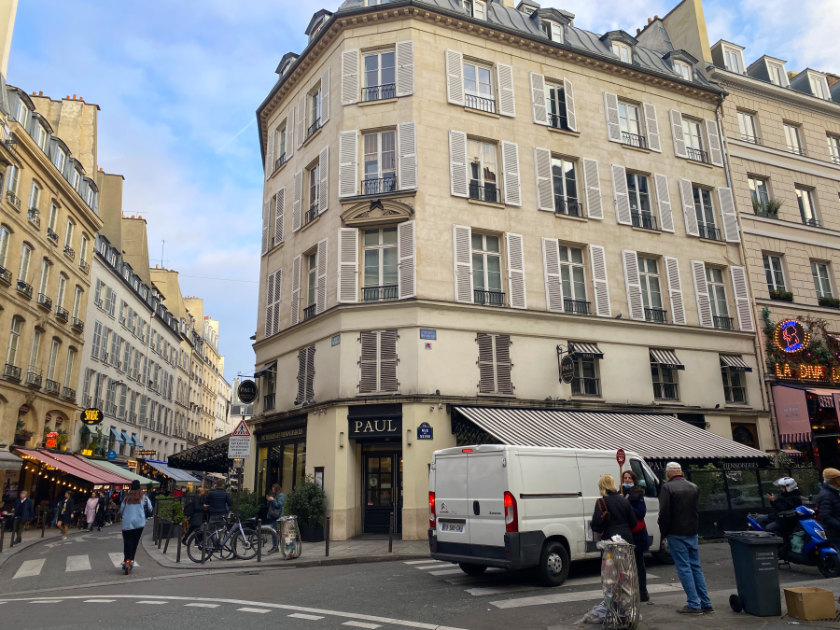
Artsy meets luxury in the 6th arrondissement, St Germain de Près
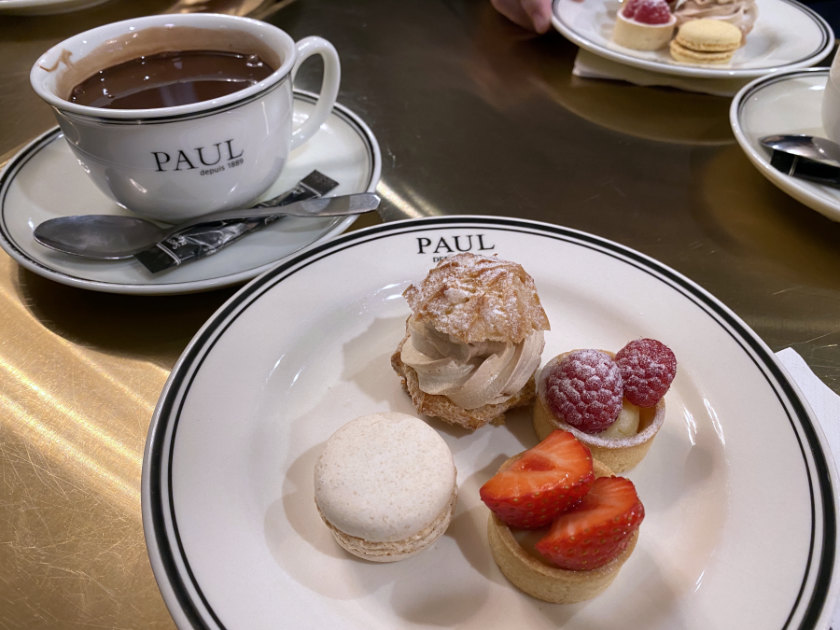
Paul’s most Parisian outpost in St Germain de Près.
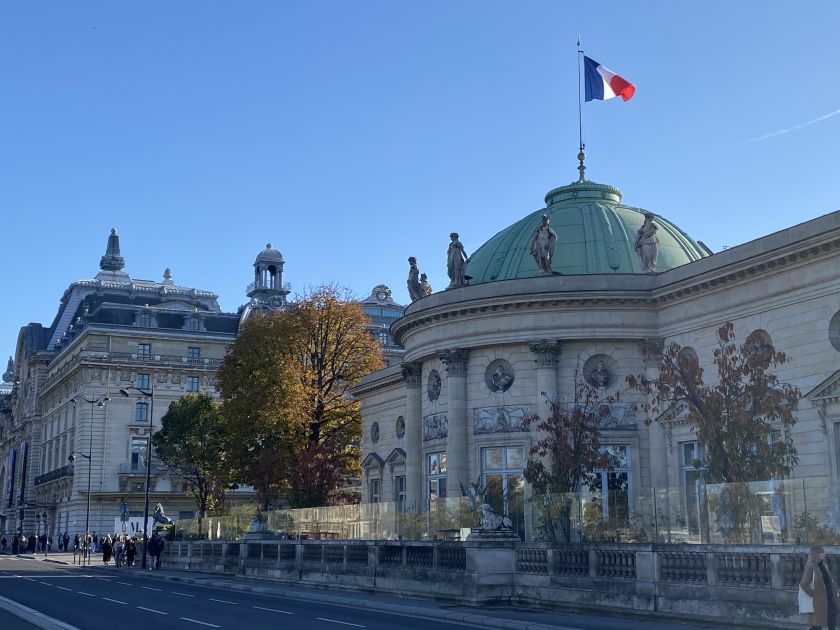
The Musée d’Orsay.
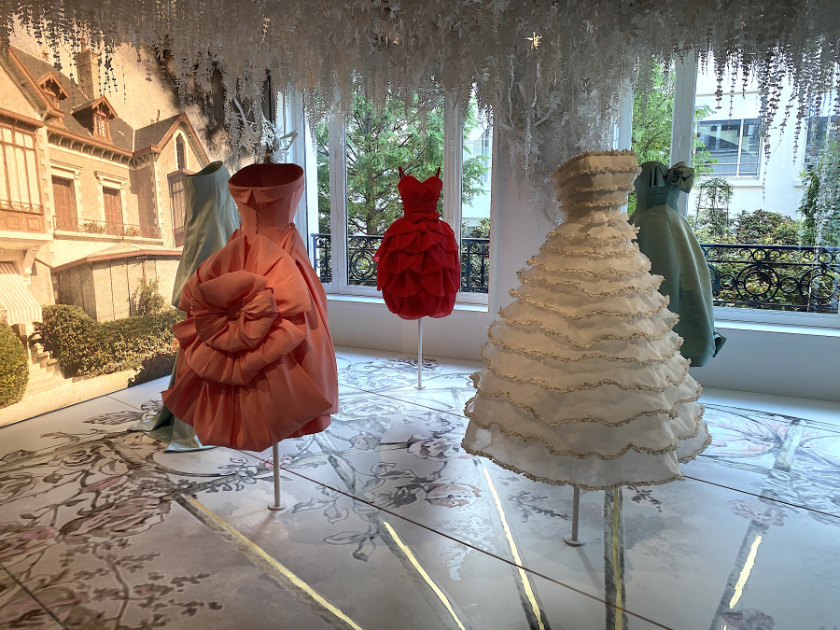
Some of the many exquisite and timeless creations inside the Archives Dior.
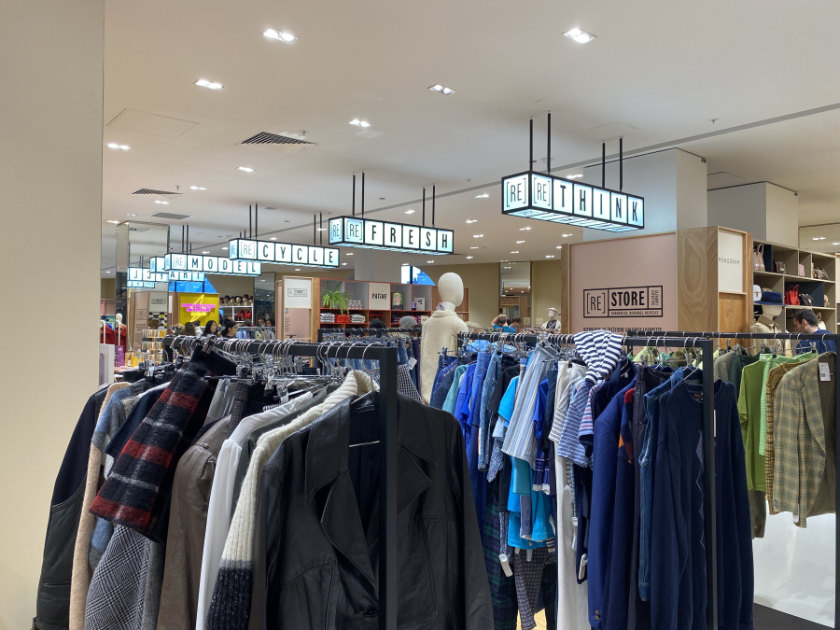
At the flagship branch of Les Galleries Lafayette, you may find your next great statement piece inside Re:Store on the third floor.
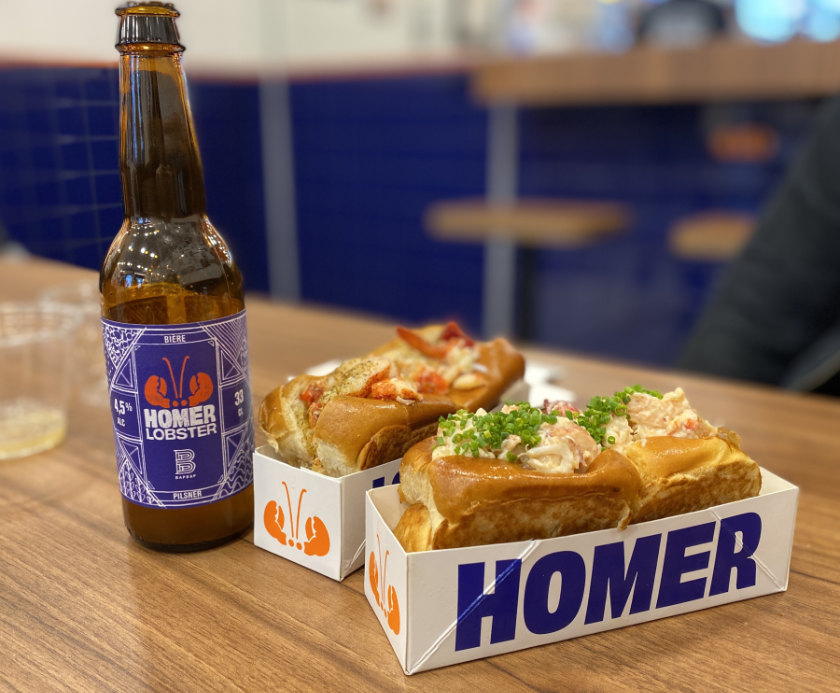
Homer’s divine lobster rolls.
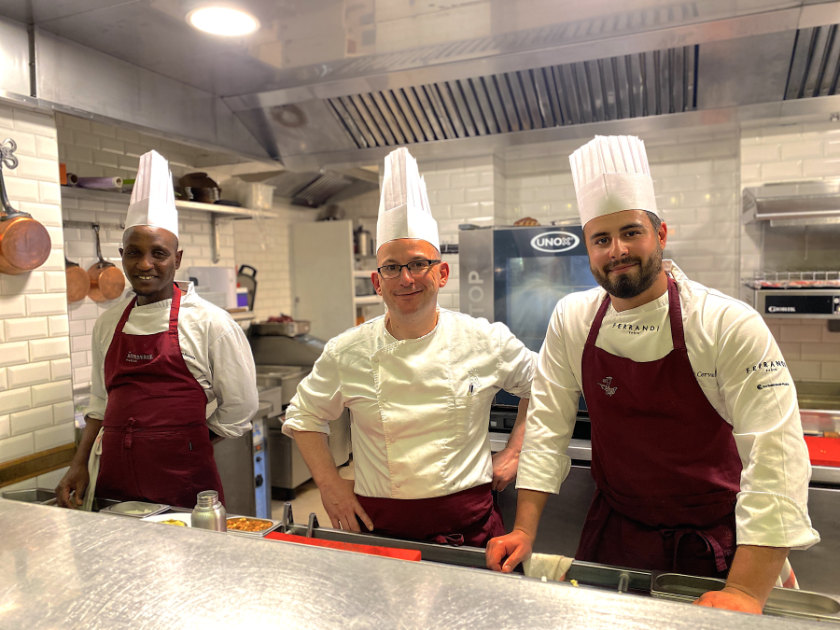
The kitchen at La Rotisserie d’Argent in the Latin Quarter.
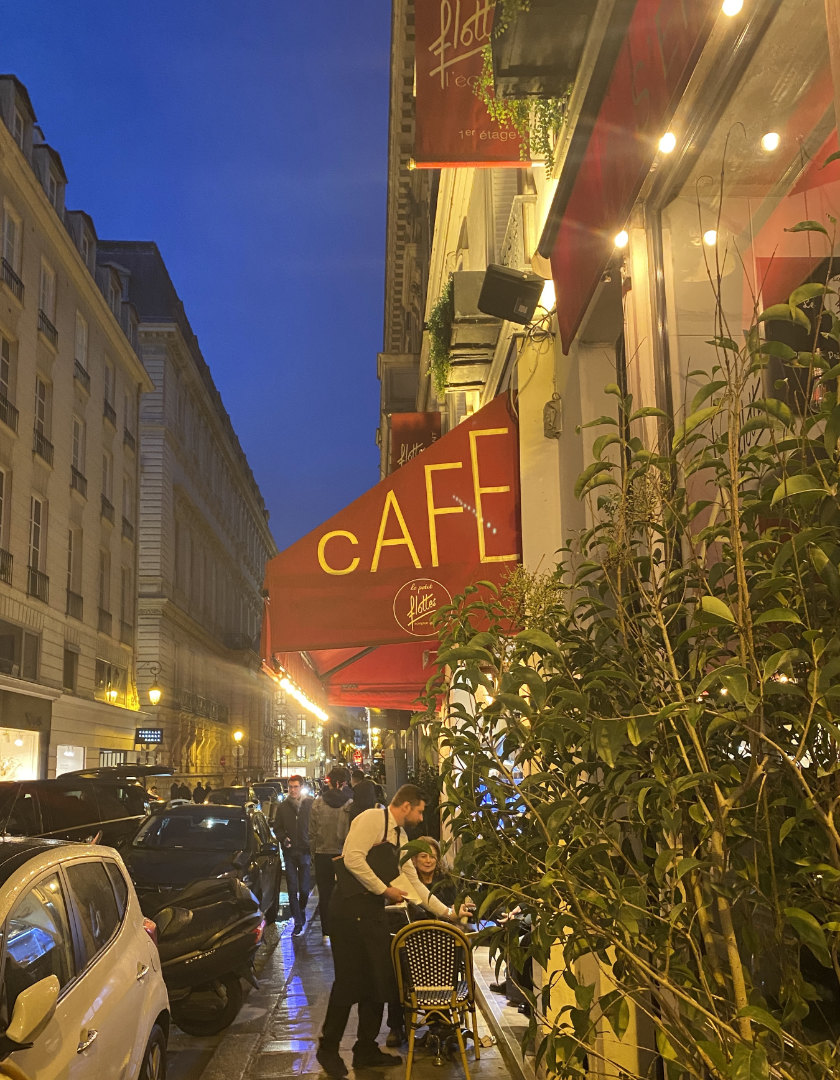
Classic Paris “café society”: Café Les Flottes.
Check out these convenient and money-saving fast passes
Paris Museum Pass
Paris Métro pass
This story also appears in Lucire, online and in print. Click here to read it in French.
